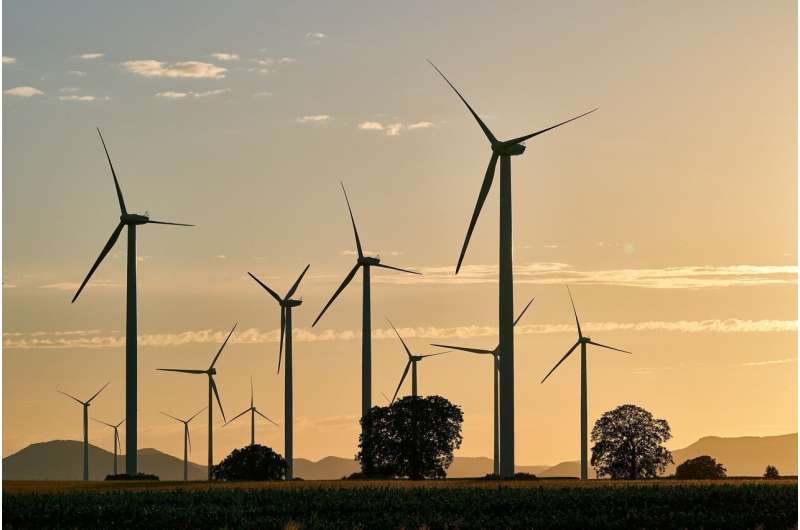
China will need to generate more than half of its power from wind and solar by 2035 to align with global climate goals, according to new research led by the University of California San Diego. The study offers timely recommendations to meet the country’s forthcoming climate commitments.
The study, published in Cell Reports Sustainability, comes as countries worldwide are expected to submit a new round of Nationally Determined Contributions (NDCs)—the five-year climate plans required under the Paris Agreement. Originally due in February of this year, the release has been delayed, but is anticipated soon. China’s updated 2035 NDC, in particular, is seen as pivotal to global efforts to limit warming to well below 2°C.
The authors of the paper, who looked specifically at China’s power sector, emphasize that current policy frameworks are insufficient and that the 2035 NDC is a chance to reset expectations.
“There’s no solution to climate change without China,” said Michael Davidson, the study’s corresponding author who is an assistant professor at the School of Global Policy and Strategy and the Department of Mechanical and Aerospace Engineering at the Jacobs School of Engineering. “It accounts for about 30% of global greenhouse gas emissions—more than double that of the next biggest emitter, the United States. What China does next will be a litmus test for global climate change efforts.”
Powering half the grid with wind and solar
In order to meet climate commitments, wind and solar should supply up to 56% of China’s electricity by 2035, the study finds—up from just 18% in 2024. When including hydro, nuclear, and biomass, clean energy should make up nearly 80% of the generation mix.
This would significantly reduce the role of fossil fuels in China’s power system, cutting coal and gas generation to as little as 20% by 2035.
“Setting a wind and solar generation share target is a robust approach for power sector planning, given massive uncertainties related to economic activity and energy use,” Davidson explained. “Generation share targets provide clear guidance to maintain momentum toward the country’s 2060 carbon neutrality target.”
The researchers recommend China deploy between 2,910 and 3,800 gigawatts (GW) of wind and solar power by 2035—up from around 1,200 GW today—to stay on track. That would require installing 120–220 GW of new renewables per year, a goal China has already outpaced with its record-breaking deployment of 357 GW in 2024.
“It’s feasible and we think pragmatic,” said Davidson, who collaborated with researchers from Tsinghua University in Beijing on the paper. “In fact, the growth rates we propose are below what China has already achieved historically. These targets reflect a cautious optimism, grounded in current capacity and policy momentum.”
The authors assessed what kind of power sector targets China could realistically adopt to align with its climate goals by modeling various scenarios with a granular representation of where the wind and solar farms would be built. They incorporated both technical constraints and a large range of uncertainties.
“Our findings show a pathway that is both ambitious and achievable,” the authors said.
As nearly every country prepares to release updated climate plans, China’s decisions could shape the pace and ambition of global efforts. The researchers say this study offers a data-driven benchmark to guide policymakers—not just in Beijing but in other capitals where wind and solar are playing an increasing role.
The study was led by Ph.D. student in Mechanical and Aerospace Engineering at the Jacobs School of Engineering Zhenhua Zhang, with co-authors from Tsinghua University, Ziheng Zhu, Xi Lu and Da Zhang.
More information:
Zhenhua Zhang et al, Ratcheting up wind and solar targets for decarbonizing the power sector in China and beyond, Cell Reports Sustainability (2025). DOI: 10.1016/j.crsus.2025.100389
Citation:
Clean power surge needed: China’s 2035 climate plan must aim high (2025, May 15)
retrieved 15 May 2025
from
This document is subject to copyright. Apart from any fair dealing for the purpose of private study or research, no
part may be reproduced without the written permission. The content is provided for information purposes only.













Leave a comment